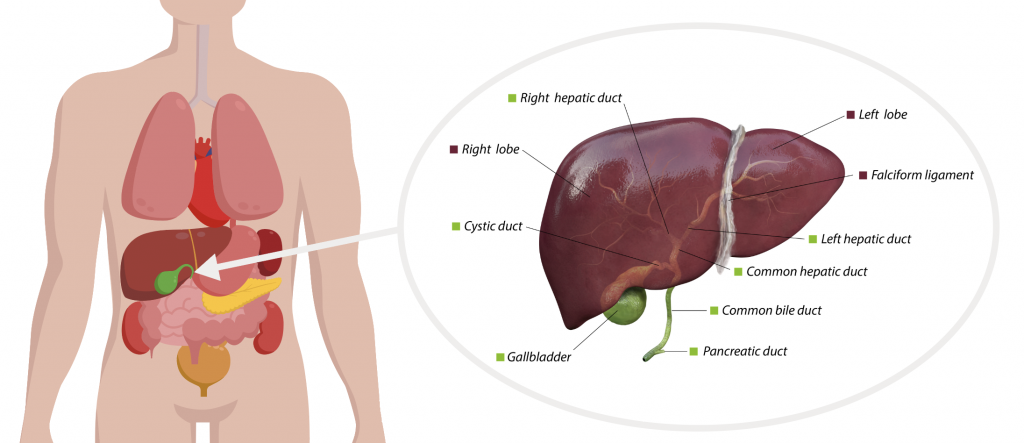A laparoscopic cholecystectomy is a keyhole (laparoscopic) operation that is used to remove the gallbladder. The gallbladder is a small organ located under the liver that stores bile, a fluid that helps with digestion. If the gallbladder becomes inflamed or contains stones, it may need to be removed to relieve symptoms and prevent complications. Surgery can also be required for other problems of the gallbladder such as gallbladder polyps or early gallbladder cancer.

LAPARAOSCOPIC CHOLECYSTECTOMY
What is a laparoscopic cholecystectomy?
How is a laparoscopic cholecystectomy performed?
During a laparoscopic cholecystectomy, several small incisions are made in the abdomen. A laparoscope, a thin tube with a camera and light attached, is inserted through one of the incisions to provide a view of the inside of the abdomen with carbon dioxide gas insufflated to create space for surgery. Surgical instruments are inserted through the other incisions to remove the gallbladder. The surgeon uses the laparoscope to guide the instruments and remove the gallbladder through one of the incisions.
Whilst conventional laparoscopy is used for most cases, the operation can also be performed robotically. This can provide additional benefit (over and above laparoscopy alone) in a small subset of individuals such as those with cirrhosis. In rare situations, such as advanced lung disease or significant previous surgery, traditional open surgery (via a cut in the upper abdomen) might be the most suitable option.
What are the benefits of a laparoscopic cholecystectomy?
Compared to open surgery, which involves a larger incision and a longer recovery time, a laparoscopic cholecystectomy is less invasive and has several benefits, including:
- Smaller incisions
- Less pain
- Shorter hospital stay
- Faster recovery
- Lower risk of complications
- Better cosmetic outcome
What are the risks of a laparoscopic cholecystectomy?
Although a laparoscopic cholecystectomy is generally safe, there are risks associated with any surgical procedure, including:
- Bleeding
- Infection
- Damage to nearby organs such as the common bile duct or hepatic duct
- Difficulty breathing
- Blood clots
- Allergic reactions to anesthesia
What can I expect after a laparoscopic cholecystectomy?
After the procedure, you will be monitored in a recovery room for several hours. You may feel some pain and discomfort, but this can usually be managed with pain medication. You may also experience some nausea and vomiting, but this should subside within a few hours. You will be able to go home the same day or the following day, depending on your recovery. You may need to avoid heavy lifting and strenuous activity for a few weeks after the procedure to allow your body to heal. Your surgeon will provide specific instructions on postoperative care and follow-up appointments. Most patients are able to eat a regular diet without any restrictions after recovering from surgery.
In summary, a laparoscopic cholecystectomy is a minimally invasive surgical procedure that is used to remove the gallbladder. It has several benefits over open surgery, including smaller incisions, less pain, and a faster recovery time. Although there are risks associated with any surgical procedure, a laparoscopic cholecystectomy is generally safe and effective in relieving symptoms associated with gallbladder problems.
